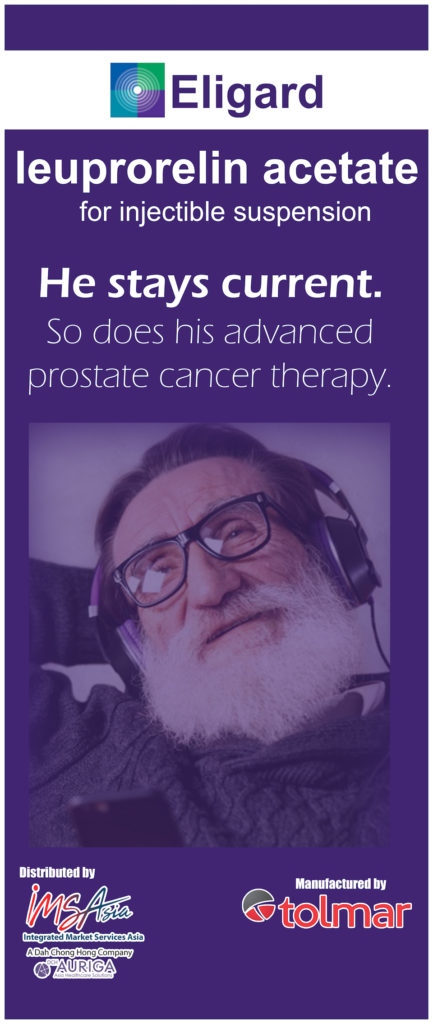The second day of the 63rd Philippine Urological Association annual convention featured speakers from the East Asian Society of Endourology (EASE). The plenary was moderated by the Philippine Endourological Society (PES) and was divided into five sessions which tackled the different urologic organs. The day was then capped off with a semi live surgery from our colleagues from the Chinese University of Hong Kong.
Experts from EASE shared valuable insights and recommendations on the advancements of endourology and minimally invasive surgery. A lot of interesting ideas were shared during the course of the plenary which would prove useful in advancing endourology and minimally invasive surgery in the Philippines.

The program was started with opening remarks from PES president Dr. JV Prodigalidad and EASE Secretary General Dr. Tadashi Matsuda. This was then followed by the lectures from Dr. Nobuyuki Hinata and Dr. Chang Chung Ngo.
The first part of the plenary focused on the minimally invasive techniques in partial nephrectomy. Robotic and laparoscopic nephrectomy were showcased in both lectures. Different techniques and approaches were discussed which gave us insight in the possibility of doing minimally invasive surgery on complex renal masses. Robotic and laparoscopic partial nephrectomy has been shown to be similar in perioperative outcomes which include warm ischemia time, surgical margins, and complications. The trifecta system for complex renal tumors which was discussed by Dr. Hinata emphasized the importance of surgical margins, no complications, and minimal renal function decrease during minimally invasive partial nephrectomy. Data from their institution showed a trifecta achievement rate as high as 80.2% and 70.2% for tumors with renal nephrometry score <7 and <10 respectively. As we get more evidence for robotic and laparoscopic partial nephrectomies for complex renal tumors, there may come a time when minimally invasive nephron sparing surgery becomes the standard of care for these tumors.





The second part of the plenary discussed some of the current urologic practices in prostate cancer. The first speaker was Dr. Soki Kashima, he talked about the role of extensive lymph node dissection during robotic radical prostatectomy after neoadjuvant chemotherapy. During his talk, he discussed the advantage of giving neoadjuvant chemo and hormonal therapy prior to radical prostatectomy in high risk prostate cancer patients. Biochemical recurrence (BCR) free survival has been shown to be higher compared to patients treated with radical prostatectomy alone. However, their data suggest that the type of lymph node dissection as well as the number of nodes dissected during radical prostatectomy is not related to BCR free survival. In conclusion, Dr. Kashima has suggested that combined neoadjuvant systemic and individualized local therapy without extensive lymph node dissection may be one of the optimal management strategies for high risk prostate cancer patients. The second talk was given by Dr. Samuel Yee who is one of the pioneers in Hong Kong in using focal therapy to treat prostate cancer. He talked about HIFU (high intensity focused ultrasound) for the management of prostate cancer. It is an alternative way of managing prostate malignancy, and uses sound waves directed at the prostate lesion causing an increase in temperature at the targeted site which kills cancer cells in seconds. Together with imaging modalities, it can accurately detect and target lesions in the prostate. This treatment option proves to be a good alternative for urologist who seek to offer patients a minimally invasive way of treating prostate cancer.







The third part of the plenary talked about some of the minimally invasive surgical techniques for the management of upper urinary tract carcinoma (UTUC) and robotic radical cystectomy for bladder cancer. Dr. Takashi Yoshida discussed the advantage of combining photodynamic diagnosis with Holium YAG (Ho) and Thulium YAG (Tm) laser in ablating low risk UTUC. This modality of treatment is especially useful for patients who are not good candidates for radical surgery. Recent guidelines have recommended to offer kidney sparing management for low risk UTUC, patients with solitary kidney, or those with impaired renal function. Combining the good fragmentation effect of Hm with the high hemostatic effect of Tm, Dr. Yoshida showed the effectiveness of using endoscopic ablation of low risk UTUC. Photodynamic diagnosis or PDD has been used by Dr Yoshida in detecting non-apparent tumors or micro lesions which are not visible in white light. A comparative study between PDD-DLA (Ho and Tm) and conventional Ho-LA was also presented by Dr. Yoshida which showed that PDD-DLA has a higher probability for disease progression-free survival and recurrence-free survival.








The next speaker was Dr. Seok Ho Kang who talked their experience about robot-assisted radical cystectomy in Korea. Although open radical cystectomy with pelvic lymph node dissection is still the gold standard for muscle invasive bladder cancer and a high risk non muscle invasive bladder cancer, there has been increasing trends in the use of minimally invasive robotic surgery for bladder cancer worldwide. A systematic review and meta-analysis done in Korea showed that the robotic assisted radical cystectomy has comparable short to intermediate term oncological outcomes compared to open radical cystectomy. Satisfactory perioperative outcomes such us estimated blood loss, transfusion rate, and hospital stay suggest that robotic assisted radical cystectomy is a safe procedure when compared to open radical cystectomy. Dr. Kang ended his talk with showing his technique for an intracorporeal robotic assisted radical cystectomy.








The fourth part of the plenary focused on the minimally invasive management of urolithiasis. Dr. Young Eun Yoon of Korea showed the different applications of robotic surgery in treating patients with urinary stones. Dr. Yoon showed his technique doing robotic ureterolithotomy for upper ureteral stone and demonstrated the ease of putting double j stent when compared to a laparoscopic approach. Mean console time, total operative time, and stone free rate is comparable to ureteroscopic lithotripsy. Dr. Yoon then showed the different types of robotic stone surgery from pyelolithotomy to anatrophic nephrolithotomy which succeeded in demonstrating the use of robotic surgery to manage different kinds of urinary stones based on location. The expanded use of robotics in stone surgery have shown us that in the hands of an expert, robotic surgery offers advantages in stone free rate, complication rate, and operative time when tackling large complex urinary stones. The next speaker was Dr. Deok Hyun Han who talked about their experience in prone endoscopic combined intrarenal surgery (ECRIS). During the talk Dr. Hyun showed his insights in prone ECRIS and how it can be applied in the local setting. Prone ECRIS has been shown to be a good technique in addressing renal staghorn disease with only a single mini percutaneous nephrolithotomy (PNL) tract and excellent stone free rate. It is shown that prone ECRIS offers efficient stone fragmentation due to the simultaneous antegrade and reterograde approach, and access to previously inaccessible calyceal stones with minimal movement of the PNL tract which minimizes renal trauma during surgery.







The last part of the plenary was a semi live surgery presented by Dr. Samuel Yee. The case was about a robotic assisted radical cystectomy done in a renal transplant patient. To date there are only a few cases of robotic assisted radical cystectomy done in renal transplant patients worldwide. What made this surgery unique was the anatomy of the transplanted kidney and its close relationship with the pelvic organs. In order to safely identify the ureter, Dr. Yee’s team used indocyanine green (ICG) to aid in its dissection. The steps of the surgery included identification of the ureters, dissection of the posterior bladder, development of the space of Retzius, transection of the urethra, pelvic lymph node dissection, creation of an ileal conduit with the aid of stapled enteric anastomosis, and en bloc removal of the native kidney. Dr. Yee and his colleagues were able to do the whole procedure intracorporeally in one stage with minimal blood loss and comparable operative time. In conclusion, surgical procedures like this give insight on the possibilities of robotic surgery especially in complex clinical situations. Advancements in technology as well as innovations in surgical technique have paved the way for urologists around the world to improve the quality of care they give to patients worldwide.










In summary, the insights of our speakers have surely helped boost and develop the practice of endourology and minimally invasive surgery here in the Philippines. The exposure and knowledge we obtained from this plenary have made Filipino urologists better equipped for the challenges of the ever-changing practice of Urology.
Mabuhay and PUA!



0 Comments